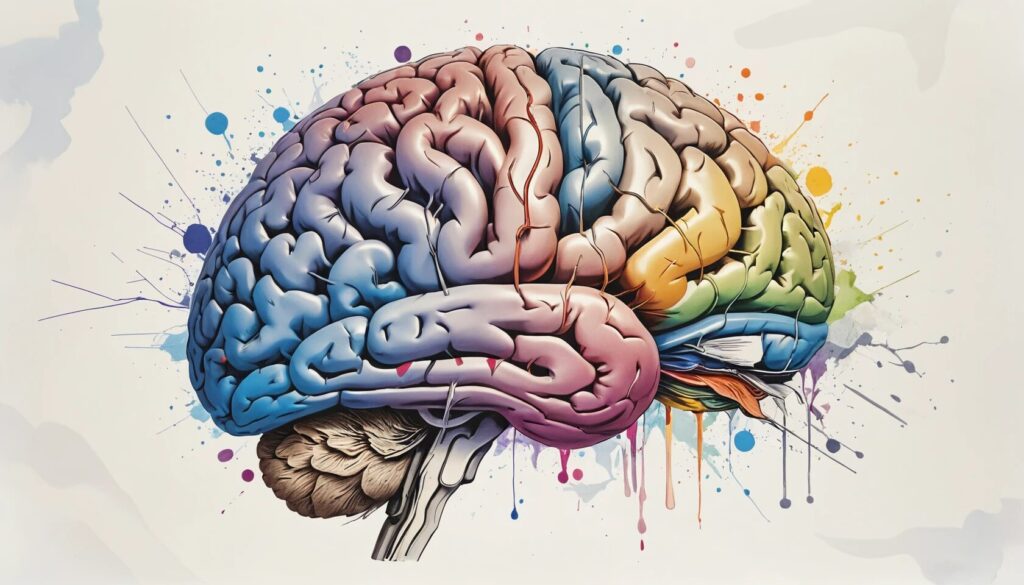The Secret Language of Colors: How Color Psychology Shapes Your World
Picture this: You walk into a hospital room painted entirely in a deep, blood-red hue. Comforting, right? Absolutely not. Now imagine the same room in a soft, pastel blue—suddenly, the anxiety melts away. This isn’t magic or some mystical aura nonsense; it’s pure, undeniable color psychology. The psychological effects of color influence our emotions, decisions, and even our appetite. Whether you’re choosing a brand logo or picking out a shirt for a first date, the meaning of colors plays a bigger role than you might think. So, let’s dive into the colorful rabbit hole and uncover why your favorite shade might be secretly controlling you.
Why Color Psychology Isn’t Just a Designer’s Gimmick
- Colors influence emotions and behavior. Different hues trigger different psychological responses, from excitement to serenity.
- Culture shapes color perception. What’s joyful in one part of the world might scream bad luck elsewhere.
- Brands use colors to manipulate you—yes, really. Your favorite fast food joint didn’t pick red and yellow by accident.
Let’s get one thing straight: color isn’t just about aesthetics. It’s a psychological powerhouse that subtly dictates how we feel and behave. Ever wonder why most social media platforms—Facebook, Twitter, LinkedIn—bathe themselves in blue? It’s because blue evokes trust and reliability. Meanwhile, red, the color of passion and urgency, dominates clearance sale signs and stoplights alike.
Culture also plays a devious role in color interpretation. In Western societies, white symbolizes purity and weddings; in some Asian cultures, it’s the color of mourning. This is why international brands carefully tweak their color schemes when targeting different markets. What works in New York might flop in Tokyo.
The Psychological Effects of Color: What Each Hue Really Means
- Red: Urgency, passion, and excitement—often used to provoke action.
- Blue: Trust, calmness, and stability—favored by financial and tech industries.
- Green: Growth, harmony, and health—linked to nature and sustainability.
- Yellow: Happiness, energy, and caution—great for drawing attention.
- Black: Power, luxury, and mystery—dominant in high-end branding.
Red is the ultimate attention-seeker. It raises heart rates, creates urgency, and is equally beloved by Valentine’s Day marketers and fire trucks. This is why brands like Coca-Cola and Target drench themselves in this power color.
Blue, on the other hand, is the color of trust. That’s why banks, insurance companies, and tech giants lean into it. A company like IBM doesn’t choose blue just because it looks nice—it’s a calculated move to project stability.
Green, the darling of environmentalists and organic food brands, screams freshness and renewal. Think Whole Foods or Starbucks. It’s also used in finance because, well, money.
Yellow, the sunshine of the color spectrum, is a double-edged sword. It radiates positivity but, in excess, can cause anxiety. This is why it’s often used sparingly—to grab attention without overwhelming.
And then there’s black, the epitome of sophistication. Luxury brands like Chanel and Apple embrace black for its association with exclusivity and power.
How Color Psychology Creeps into Everyday Life
- Your home decor affects your mood. The right colors can make or break a space.
- Your wardrobe sends a message. The color of your outfit can influence first impressions.
- Marketing tactics rely on color psychology. Brands strategically use colors to manipulate emotions.
- Food presentation influences appetite. Some colors make you hungrier, while others suppress appetite.
Think color psychology is just a corporate marketing trick? Think again. The colors in your living space can directly impact your mood. A bright yellow kitchen might energize you in the morning, but too much yellow can become overwhelming and stressful.
Fashion works the same way. Want to appear confident in an interview? Wear navy blue. Trying to command authority in a business meeting? Black is your best friend. And if you want to seem approachable and warm, opt for soft pastels.
Even food is affected by color psychology. Red and yellow, which stimulate hunger, dominate fast-food branding. Meanwhile, blue—rarely found in natural foods—actually suppresses appetite. Ever notice how blue-themed restaurants are practically nonexistent?
Using Color Psychology to Your Advantage
- Warm colors create energy and excitement. Great for social spaces and creative environments.
- Cool tones promote relaxation. Ideal for bedrooms, offices, and calming atmospheres.
- Strategic color choices enhance branding. Align your brand’s identity with the right color palette.
- Contrast and balance matter. Complementary colors can create striking visuals.
Want to be more productive? Inject some orange or red into your workspace. Looking for a peaceful retreat? Stick to blues and greens. Even small changes—like the color of your phone case or the background of your computer screen—can subtly affect your mood and energy levels.
For businesses, mastering color psychology is practically a cheat code. A poorly chosen logo color can make a brand forgettable, while the right hue can evoke trust, excitement, or luxury. This is why companies spend millions on color research—it’s not just about looking pretty; it’s about influencing behavior.
Why Color Psychology Matters More Than You Think
Color isn’t just decoration—it’s a psychological force that shapes how we think, feel, and act. From the clothes we wear to the brands we trust, colors are quietly pulling the strings behind the scenes. Whether you’re redesigning your home, launching a brand, or just picking out an outfit, understanding the emotional influence of colors can help you make smarter, more intentional choices.
Next time you reach for that bold red sweater, paint your walls a calming blue, or design a new logo, remember: color psychology is always at play. Make sure it’s working in your favor.
